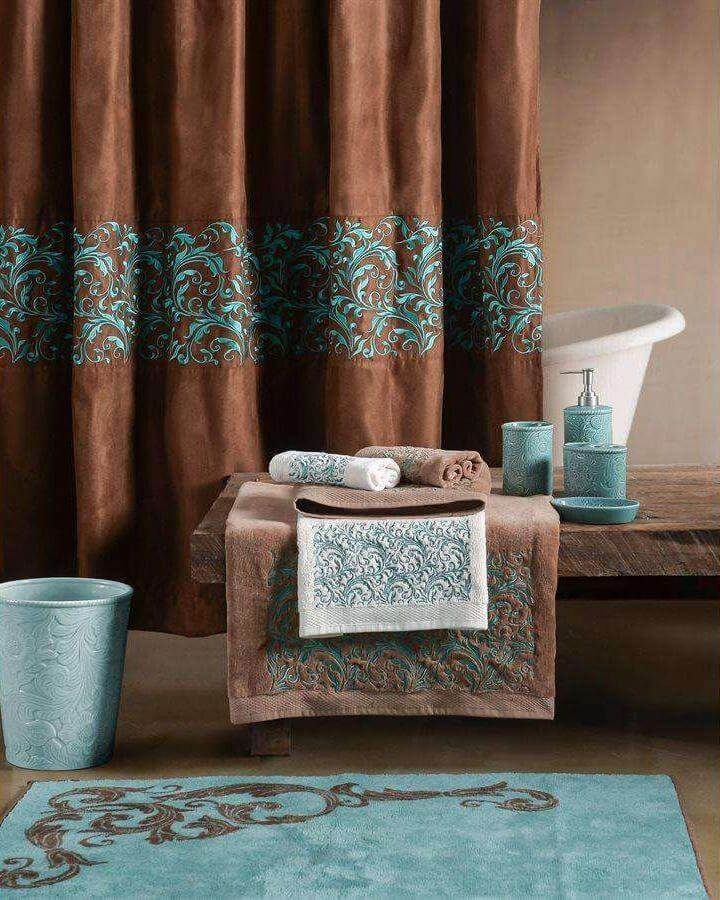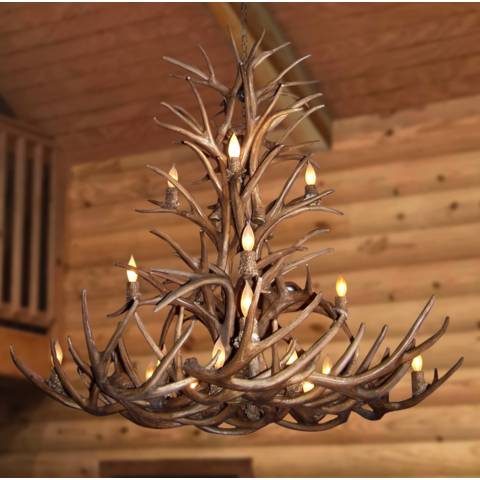Bathroom design is an intricate symphony of functionality and aesthetic prowess, where every element contributes to a transformative spatial narrative.
The western-inspired bathroom aesthetic transcends mere utilitarian spaces, emerging as a sophisticated canvas that harmonizes rugged charm with contemporary sensibilities.
Western Bathroom Ideas
From the windswept landscapes of Montana to the sun-drenched ranches of Texas, western bathroom design embodies a unique confluence of robust character and refined elegance, offering homeowners an opportunity to craft sanctuaries that reflect both heritage and personal style.
1. Reclaimed Wood Vanity Design

Western bathroom design begins with authenticity, and nothing captures this essence more profoundly than a reclaimed wood vanity. These remarkable pieces tell stories of bygone eras, transforming ordinary bathrooms into spaces filled with historical resonance. Salvaged barn wood, weathered by decades of prairie winds and southwestern sunlight, becomes a stunning centerpiece that anchors the entire bathroom’s aesthetic.
The beauty of reclaimed wood vanities lies not just in their visual appeal but in their sustainable narrative. Each plank carries unique grain patterns, knots, and subtle imperfections that speak to a rich architectural heritage. When carefully crafted, these vanities provide robust storage solutions while simultaneously serving as conversation-starting design elements that elevate the entire bathroom’s ambiance.
2. Wrought Iron Towel Racks and Accessories

Wrought iron represents the quintessential western metalwork tradition, bringing an industrial yet refined touch to bathroom spaces. These meticulously designed accessories transcend mere functional items, becoming artistic statements that complement the rustic aesthetic. Handcrafted towel racks, with their intricate scrollwork and robust construction, embody the spirit of craftsmanship inherent in western design philosophy.
The versatility of wrought iron allows for remarkable design flexibility. Whether integrated with minimalist modern interiors or traditional ranch-style environments, these accessories provide a consistent thread of authenticity. From elaborate, ornate designs reminiscent of Spanish colonial influences to streamlined contemporary interpretations, wrought iron elements create visual anchors that define the bathroom’s character.
3. Southwestern Color Palette

The southwestern color palette is a vibrant celebration of desert landscapes, capturing the nuanced hues of arid terrains and indigenous artistic traditions. Warm terracotta, deep adobe reds, sandy beiges, and muted turquoise create a sophisticated chromatic narrative that transforms bathrooms into immersive sensory experiences. These colors do more than decorate; they evoke the expansive, untamed spirit of western territories.
Color selection requires careful consideration of balance and proportion. While bold southwestern hues can be captivating, they must be strategically deployed to prevent visual overwhelm. Neutral base tones like cream or soft gray provide essential breathing room, allowing statement colors to shine without becoming oppressive. Textural elements like handwoven towels or ceramic accessories can further enhance this colorful storytelling.
4. Leather Accent Details

Leather represents more than a material in western design—it symbolizes durability, craftsmanship, and a connection to pastoral traditions. In bathroom spaces, strategically incorporated leather elements introduce textural complexity and sophisticated warmth. Leather-wrapped mirror frames, drawer pulls, or even leather-upholstered seating can transform utilitarian spaces into curated environments.
The key to successful leather integration lies in thoughtful selection and maintenance. Full-grain leathers with minimal processing capture the most authentic western essence, displaying natural markings that tell unique stories. When paired with complementary materials like aged wood or burnished metals, leather becomes a dynamic design element that elevates the entire bathroom’s aesthetic narrative.
Related Guide: 14 Intriguing Victorian Bathroom Ideas
5. Rustic Stone Sinks

Stone sinks represent the geological poetry of western landscapes, bringing raw, elemental beauty into bathroom designs. Hand-carved from materials like travertine, slate, or river rock, these magnificent fixtures transform mundane washing routines into ritualistic experiences connected to natural environments. Each sink becomes a sculptural statement, reflecting the rugged individualism inherent in western design philosophies.
The selection process for stone sinks demands careful consideration of both aesthetic and practical dimensions. While visually stunning, these sinks require appropriate sealing and maintenance to ensure longevity. Choosing stones with inherent water-resistant properties and working with skilled artisans ensures that these fixtures remain both beautiful and functional for years to come.
6. Antler-Inspired Lighting Fixtures

Lighting in western bathroom design transcends illumination, becoming a narrative device that captures wilderness and heritage. Antler-inspired fixtures, whether crafted from authentic deer or elk antlers or meticulously designed metal replicas, introduce organic sculptural elements that connect interior spaces with natural landscapes. These lighting solutions provide both ambient and focused illumination while serving as compelling artistic statements.
Modern interpretations of antler lighting offer remarkable design versatility. Contemporary metalwork techniques allow for lightweight, streamlined designs that capture the essence of traditional motifs without overwhelming smaller bathroom spaces. Carefully selected fixtures can integrate seamlessly with various design approaches, from rustic ranch aesthetics to more minimalist contemporary interpretations.
7. Native American-Inspired Textiles

Textile selections represent a profound opportunity to honor indigenous artistic traditions while creating visually compelling bathroom environments. Carefully curated textiles featuring geometric patterns, natural dyes, and traditional weaving techniques transform ordinary spaces into culturally rich narratives. Navajo-inspired towels, hand-woven bath mats, and strategically placed textile art pieces can introduce layers of visual and cultural complexity.
Responsible textile selection requires understanding and respecting cultural contexts. Seeking authentic pieces created by indigenous artisans ensures genuine representation and supports traditional craft communities. Mixing contemporary interpretations with historically inspired designs allows for nuanced, respectful design approaches that celebrate cultural heritage.
8. Copper Bathtub Centerpiece

A copper bathtub represents the pinnacle of western bathroom luxury, embodying both historical craftsmanship and timeless elegance. These remarkable fixtures age beautifully, developing unique patinas that tell stories of use and environmental interaction. Hand-hammered copper bathtubs create focal points that transform bathrooms from mere functional spaces into personal sanctuaries of relaxation and aesthetic contemplation.
Material selection and maintenance are crucial considerations for copper bathtubs. High-quality, thick-gauge copper ensures durability and provides superior heat retention, enhancing the bathing experience. Regular, gentle maintenance using specialized copper cleaning products helps preserve the metal’s natural luster while preventing unwanted oxidation.
9. Open Shelving with Rustic Touches

Open shelving strategies in western bathroom design celebrate transparency, functionality, and aesthetic storytelling. Utilizing reclaimed wood, wrought iron brackets, or industrial-inspired metal frames, these shelving solutions provide practical storage while maintaining design continuity. Carefully curated displays of rolled towels, vintage ceramics, and natural elements transform storage into an art form.
The art of open shelving lies in thoughtful curation. Each displayed item should contribute to the overall design narrative, creating visual harmony while maintaining practical utility. Mixing textures, incorporating natural elements like dried lavender or woven baskets, and maintaining a sense of intentional disorder can create dynamic, engaging displays.
10. Western Landscape Wall Art

Wall art serves as a powerful narrative device in western bathroom design, transforming spaces into immersive visual experiences. Large-scale photographic prints or hand-painted canvases capturing vast desert landscapes, mountain ranges, or iconic western scenes create powerful focal points that extend beyond mere decoration. These artistic interventions invite contemplation and connection with broader geographical narratives.
Selecting appropriate wall art requires sensitivity to scale, color palette, and overall design context. Oversized pieces can create dramatic statements in spacious bathrooms, while more compact images might suit smaller environments. Considerations of framing, mounting techniques, and moisture resistance ensure long-lasting visual impact.
Related Guide: 14 Creative Tiny Bathroom Ideas
11. Natural Stone Flooring

Natural stone flooring embodies the geological essence of western territories, creating foundational design elements that ground entire bathroom experiences. Materials like slate, travertine, or locally sourced stone tiles introduce textural complexity and a profound connection to natural landscapes. These surfaces not only provide durability but also create sensory experiences that engage multiple perceptual dimensions.
Proper stone selection and installation demand expert craftsmanship. Considerations of slip resistance, sealing techniques, and ongoing maintenance ensure that these beautiful surfaces remain both safe and visually compelling. Mixing different stone types or incorporating subtle pattern variations can add visual intrigue without compromising functional integrity.
12. Western-Inspired Hardware

Hardware selections represent subtle yet significant design opportunities in western bathroom environments. Drawer pulls, faucet designs, and cabinet handles crafted to evoke western motifs—featuring horse imagery, ranch-inspired silhouettes, or intricate metalwork—introduce narrative layers that transcend pure functionality. These small design elements create cohesive visual languages that bind entire design schemes.
Material selection plays a crucial role in hardware design. Burnished brass, aged copper, and hand-forged iron provide authentic textural experiences that develop beautiful patinas over time. Balancing decorative complexity with functional simplicity ensures that these design elements remain both beautiful and pragmatic.
13. Minimalist Ranch Aesthetic

The minimalist ranch aesthetic represents a contemporary interpretation of western design principles, emphasizing clean lines, functional simplicity, and subtle material narratives.
This approach strips away ornamental excess, focusing on essential design elements that capture the spirit of wide-open landscapes and pioneering sensibilities. Neutral color palettes, streamlined fixtures, and carefully curated natural materials create serene, contemplative bathroom environments.
Successful minimalist ranch design requires profound understanding of material quality and spatial relationships. Each selected element must serve multiple purposes, balancing aesthetic appeal with practical functionality. The goal is to create spaces that feel both expansive and intimately personal.
14. Vintage Cowboy-Inspired Accents

Vintage cowboy-inspired accents introduce playful narrative elements that celebrate western cultural heritage. Carefully selected vintage items like antique spurs, weathered leather accessories, or repurposed ranch equipment can become compelling design focal points. These pieces transform bathrooms into storytelling environments that honor historical traditions while maintaining contemporary design sensibilities.
Authentic vintage selection requires discerning curation. Items should be chosen not just for their historical value but for their ability to integrate seamlessly with overall design schemes. Mixing authentic vintage pieces with modern interpretations creates dynamic, multilayered design narratives.
15. Indoor Plant Integration

Plant integration represents a contemporary approach to western bathroom design, introducing living elements that soften architectural lines and create connections with natural environments.
Drought-resistant plants native to southwestern territories, such as succulents or air plants, provide low-maintenance greenery that complements rustic design aesthetics. These living design elements introduce color, texture, and a sense of organic vitality.
Successful plant integration requires understanding specific bathroom environmental conditions. Selecting plants that thrive in humid, low-light environments ensures long-term design success. Strategic placement near natural light sources, careful consideration of pot selections, and understanding individual plant care requirements create sustainable, beautiful design solutions.
Conclusion
Western bathroom design transcends mere aesthetic choices, emerging as a profound exploration of cultural heritage, personal narrative, and design philosophy.
By carefully integrating elements that honor historical traditions while embracing contemporary sensibilities, homeowners can create transformative spaces that tell rich, nuanced stories.
The key lies in understanding design as a holistic experience—where every selected element contributes to a larger, more compelling visual narrative that celebrates the untamed spirit of western territories.

